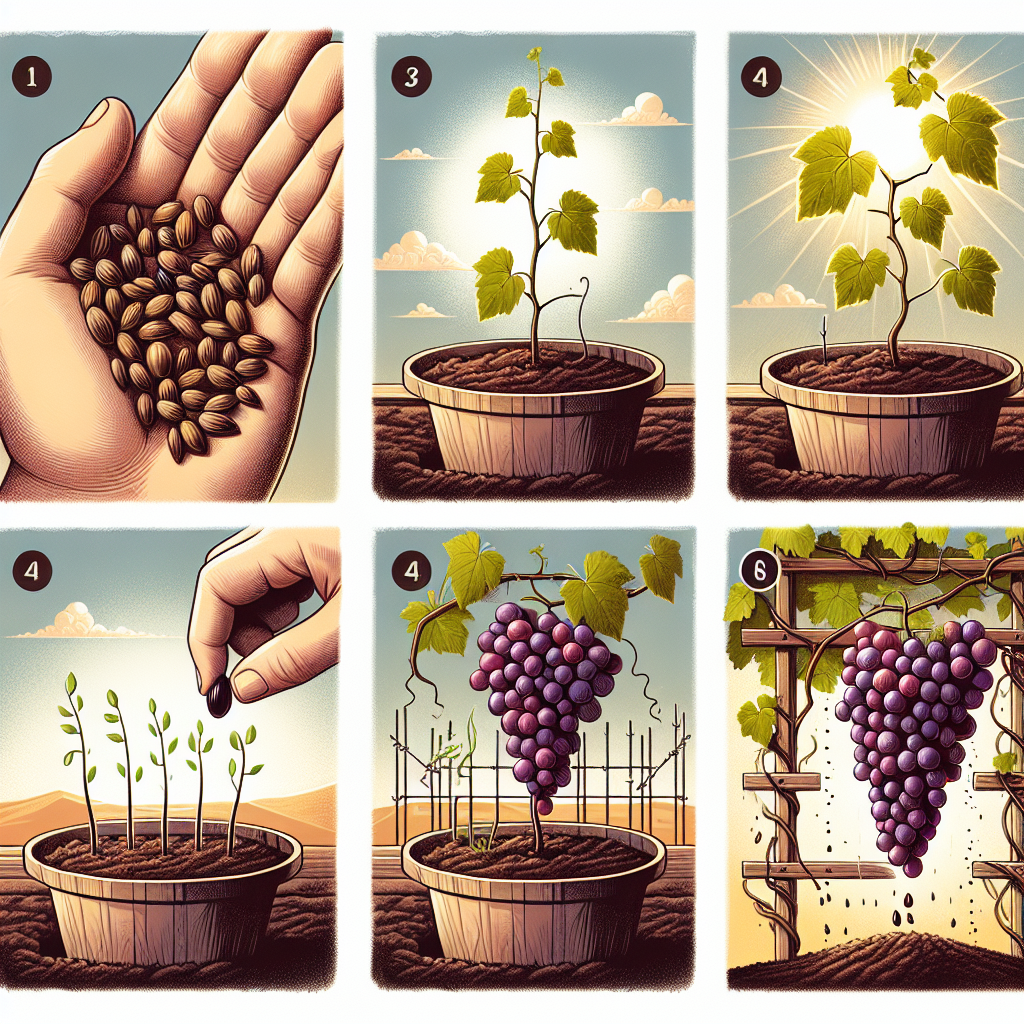
How to grow grapes from grape seeds
How to Grow Grapes from Grape Seeds: A Comprehensive Guide
Growing grapes can be a rewarding endeavor for gardeners and wine enthusiasts alike. If you have a passion for nature and a desire to cultivate your own fruits, learning how to grow grapes from grape seeds can be a gratifying experience. This guide walks you through every step, from choosing the right seeds to nurturing your vines until harvest.
Why Grow Grapes from Seeds?
Many people choose to grow grapes from cuttings or nursery plants, but opting for seeds can be a unique and enriching process. Here are some benefits:
- Genetic Diversity: Grape seeds carry unique genetic traits, producing vines with distinct flavors and characteristics.
- Cost-Effective: Purchasing seeds is typically cheaper than buying established plants.
- Experience: Growing from seeds offers an educational opportunity to witness the entire life cycle of the plant.
Understanding Grape Seed Varieties
Before you begin, it's essential to choose the right grape variety. Grapes can be categorized into two main types: table grapes and wine grapes. Each type has different flavor profiles and growing conditions. Here are a few popular varieties:
- Concord: Known for its sweet flavor, ideal for jellies and juices.
- Cabernet Sauvignon: A renowned wine variety with distinct tannins.
- Thompson Seedless: Popular as a snack or in salads, these grapes are versatile.
- Chardonnay: Widely used in white wine production with a range of flavor profiles.
Collecting Grape Seeds
The first step in the cultivation process is collecting seeds. Here’s how to properly extract seeds from ripe grapes:
- Select ripe grapes from your desired variety.
- Wash the grapes to remove any dirt.
- Crush the grapes gently to release the seeds.
- Separate the seeds from the pulp using a sieve or cheesecloth.
Once you've collected the seeds, it's time to start the germination process.
Germinating Grape Seeds
Grapes require a specific environment to germinate successfully. Here’s a step-by-step guide:
Materials Needed:
- Grape seeds
- Potting soil
- Plastic wrap or a plastic bag
- A small container with drainage holes
Steps for Germination:
- Soak the seeds in water for 24-48 hours to hydrate them.
- Prepare a container with potting soil, ensuring it’s moist but not waterlogged.
- Plant the seeds about 1/4 inch deep in the soil.
- Cover the container with plastic wrap or a plastic bag to maintain humidity.
- Place the container in a warm, sunny location, ideally around 70°F to 80°F (21°C to 27°C).
- Check regularly for moisture and remove the plastic once seedlings emerge.
Transplanting Seedlings
After a few weeks, your seedlings will start to appear. When they have developed two to three true leaves, it's time to transplant them into larger pots.
Steps to Transplant:
- Fill new pots with potting soil, leaving enough space for the roots.
- Gently remove seedlings from the container, taking care not to damage the roots.
- Place each seedling in a new pot and cover with soil.
- Water thoroughly and place in a warm, sunny spot to encourage growth.
If More Than One Seedling Grows
It's common for multiple seedlings to sprout, but overcrowding can hinder their growth. If you find yourself with several seedlings, consider the following:
- Thin out weaker seedlings to allow stronger ones to thrive.
- Transplant any extras to create a new garden area.
- If space allows, let several seedlings grow together and train them on a trellis for support.
Caring for Your Grape Vines
With your grape seedlings now transplanted, proper care will ensure strong growth. Here’s what to consider:
Watering
Grape vines need consistent moisture, especially during their first few years. Water your plants deeply but infrequently, allowing the topsoil to dry out between watering sessions.
Fertilizing
Use a balanced, slow-release fertilizer every spring. This provides the necessary nutrients for healthy growth.
Pruning
Pruning is essential for grapevines. Aim to prune your vines in late winter or early spring, before new growth begins. Remove any dead or weak wood and shape your vines to encourage airflow and sunlight exposure.
Pest and Disease Management
Protecting your grapevines from pests and diseases is crucial. Here are some tips:
- Regularly inspect your vines for pests such as aphids or spider mites.
- Use organic pesticides or insecticidal soap if infestations occur.
- Ensure proper spacing and airflow to minimize fungal diseases.
Harvesting Your Grapes
After careful nurturing, your grapevines will eventually bear fruit. Knowing when to harvest is key to enjoying the best flavor:
Indicators of Ripeness:
- Color change: Grapes will change color according to their variety.
- Taste test: Sample a grape to check for sweetness; ripe grapes should be sweet and juicy.
- Softness: Ripe grapes will feel slightly soft to the touch.
Methods for Harvesting
When your grapes are ready, use the following techniques to harvest:
- Use clean, sharp shears to cut the vine clusters from the plant.
- Handle the grapes carefully to avoid bruising.
- Store them in a cool, dry place or refrigerate for longer freshness.
Conclusion
Growing grapes from seeds can be a fulfilling project that provides both enjoyment and produce. Whether you're interested in creating your own wine or simply want the pleasure of homegrown fruit, understanding how to grow grapes from grape seeds is a valuable skill. From seed selection to harvesting, each step is an opportunity to learn and connect with nature. Happy gardening!
By Guest, Published on September 20th, 2024